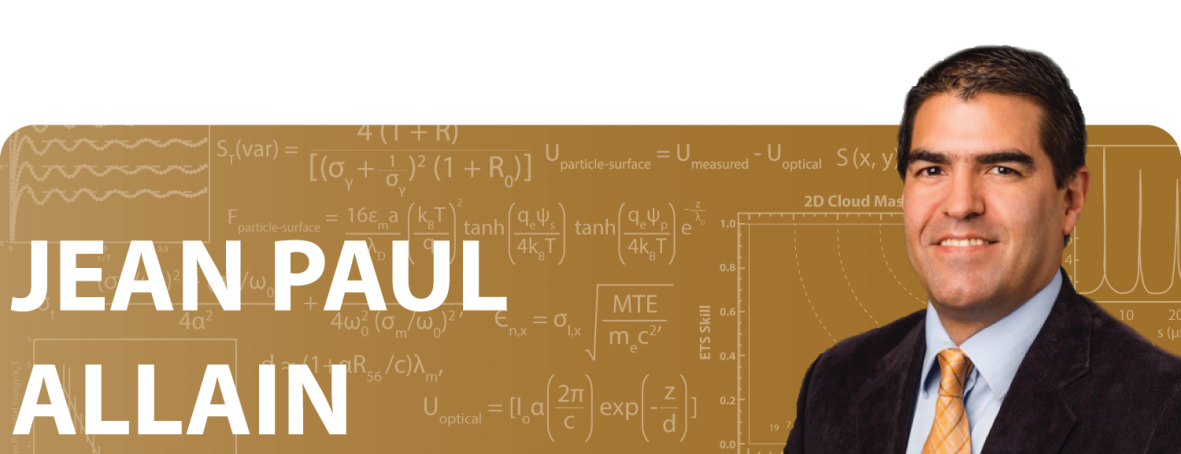WHAT DID THE 2010 EARLY CAREER AWARD ALLOW YOU TO DO?
Realizing carbon-free nuclear fusion energy remains one of the outstanding grand challenges of our time – a seemingly limitless energy source using deuterium extracted from seawater as fuel and producing little to no radioactive waste.
Although tremendous work has been achieved in the past decades, there remain significant challenges – in particular – the role that materials play in designing future nuclear fusion energy reactors. Part of this challenge is the extreme power exhaust on the surfaces of the walls that make up the fusion reactor that limit the lifetime and operation of the reactor. Fusion reactors are built to contain huge balls of plasma and large-scale erosion of the wall material results in quenching the plasma energy in the core of the reactor, limiting its operation. So, the walls of the plasma container have to be very strong. The coupling of the fusion plasma and its interface with the wall material is complex. Hydrogen and helium particles from the burning plasma implant on the material walls, which leads to erosion and poisoning the plasma edge.
This Early Career Award made it possible to harness advances in nanotechnology and to enable integrating nanoscale to mesoscale concepts. As a result, we were able to develop a family of materials that potentially could self-heal, extending the lifetime of candidate plasma-facing components. This work also enabled the design of unique in-situ diagnostics to measure in real time under realistic environmental conditions the surface chemistry and physical structure during energetic particle exposure. These measurements are helping identify new designs for materials that balance favorable bulk thermo-mechanical properties with plasma-material interaction properties essential for future fusion energy reactors.
ABOUT:
Jean Paul Allain is a professor and department head of the Ken and Mary Alice Lindquist Department of Nuclear Engineering, the director of the Radiation Surface Science and Engineering Laboratory, professor in Biomedical Engineering by courtesy and the Lloyd & Dorothy Foehr Huck Chair in Plasma Medicine at Penn State University.
SUPPORTING THE DOE SC MISSION:
The Early Career Research Program provides financial support that is foundational to young scientists, freeing them to focus on executing their research goals. The development of outstanding scientists early in their careers is of paramount importance to the Department of Energy Office of Science. By investing in the next generation of researchers, the Office of Science champions lifelong careers in discovery science.
For more information, please go to the Early Career Research Program.
THE 2010 PROJECT ABSTRACT:
Harnessing Nanotechnology for Fusion Plasma‐Material Interface Research in an in‐situ Particle‐ Surface Interaction Facility
The aim of this project is to utilize nanotechnology to address and improve plasma facing materials for use in a fusion device. The research intends to leverage advancements in nanotechnology and materials science of irradiation‐driven nano‐structured materials for a novel materials solution at the plasma‐material interface (PMI) in fusion devices. Extensive work on conventional plasma‐facing component materials such as graphite and tungsten and wall‐conditioning strategies has been conducted in the past two decades.
However, currently there is no viable materials alternative to tame the PMI for conditions found in a sustained burning fusion plasma device. The work exploits an existing small experimental facility that is capable of not only characterizing new materials but, more importantly probing and manipulating materials at the nanoscale level while performing subsequent in‐ situ testing of their performance under simulated environments to discover new materials compatible with the PMI in burning plasma devices.
RESOURCES:
El-Atwani, O., Hinks, J.A., Greaves, G., Gonderman, S., Qiu, T., Efe, M., and Allain, J.P., “In-situ TEM observation of the response of ultrafine-and nanocrystalline-grained tungsten to extreme irradiation environments.” Scientific Reports 4, 4716 (2014). [DOI: 10.1038/srep04716]
El-Atwani, O., Gonderman, S., Efe, M., De Temmerman, G., Morgan, T., Bystrov, K., Klenosky, D., Qiu, T., and Allain, J.P., “Ultrafine tungsten as a plasma-facing component in fusion devices: effect of high flux, high fluence low energy helium irradiation.” Nuclear Fusion 54, 083013 (2014). [DOI: 10.1088/0029-5515/54/8/083013]
El-Atwani, O., Efe, M., Heim, B., and Allain, J.P., “Surface damage in ultrafine and multimodal grained tungsten materials induced by low energy helium irradiation.” J. Nuclear Materials 434, 170 (2013). [DOI: 10.1016/j.jnucmat.2012.11.012]
Additional profiles of the 2010 Early Career Award winners can be found at https://www.energy.gov/science/listings/early-career-program.
The Office of Science is the single largest supporter of basic research in the physical sciences in the United States and is working to address some of the most pressing challenges of our time. For more information, please visit www.energy.gov/science.
Original post https://alertarticles.info




